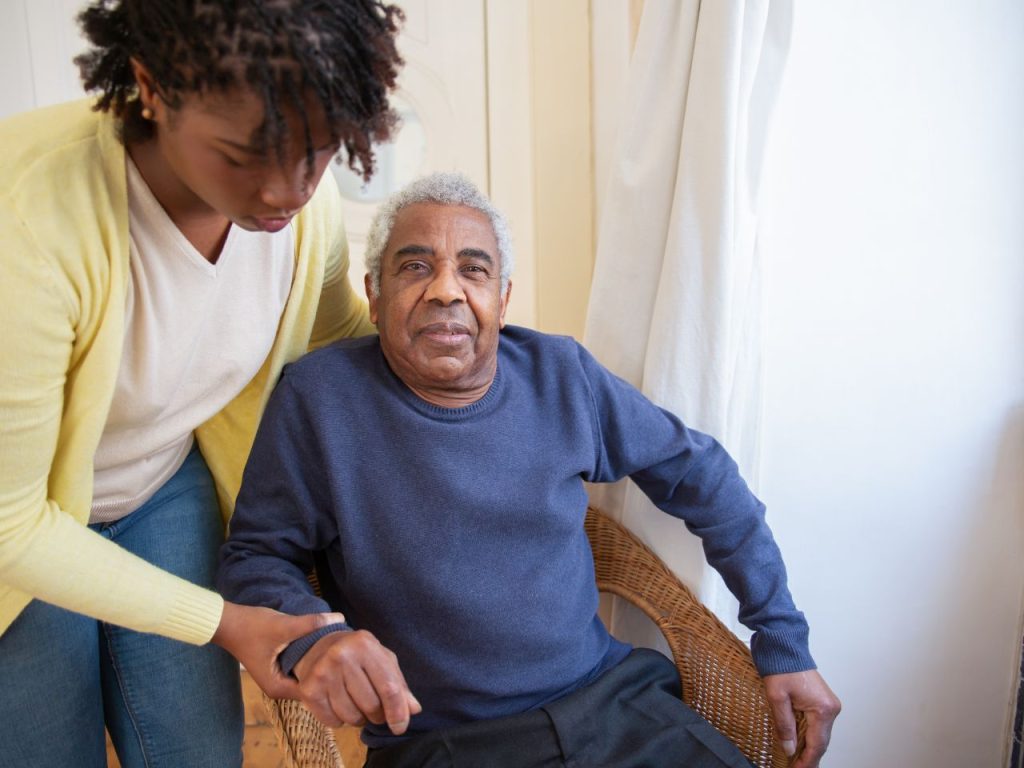
To accurately code the OASIS items associated with falls, there are some key considerations to keep in mind.
J1800- Any Falls Since SOC/ROC
As home care providers, we know that falls can be a leading cause of morbidity and mortality, and even the fear of falling can limit an individual’s activity level.
We collect information about falls at the end of the home care quality episode at Transfer, Discharge and Death at Home with OASIS item J1800- Any Falls Since SOC/ROC. To accurately collect this data, we need to understand the definition of a fall for the purposes of J1800.
A fall is defined as an unintentional change in position coming to rest on the ground, floor, or onto the next lower surface (e.g., onto a bed chair or bedside mat).
When we are responding to J1800 we need to take into consideration that witnessed or unwitnessed (reported) falls are “counted” as falls for this item and that regardless of WHERE the patient fell, if the fall occurred since the last SOC/ROC, we capture it here.
Because the definition of a fall for J1800 is an unintentional change in position coming to rest on the ground, floor or onto the next lower surface, even if the sitting surface or chair that the patient was sitting on breaks and the patient falls to the floor, this would be considered a fall for J1800 under the definition of unintentional.
Intercepted falls are also considered falls for J1800. An intercepted fall occurs when the patient would have fallen if they had not caught themselves or had not been intercepted by another person. These may be more difficult to accurately collect and record and may need a more in-depth review of the home health clinical record and/or documentation, specific interviewing of the patient and caregivers and assessment of any incident reports or fall logs.
NOT considered falls include an anticipated loss of balance during a supervised therapeutic intervention or a fall caused by an overwhelming external force (e.g., a patient pushes another patient).
J1900- Number of Falls since SOC/ROC
When at least one fall has been identified and captured in J1800, the next OASIS item, J1900- Number of Falls since SOC/ROC needs to be addressed. In this item we are capturing the number of falls and the level of injury sustained during the fall or falls that were identified in J1800. For J1900, each fall is coded only once even if multiple injuries were incurred (the fall would be coded for its highest level of injury).
For J1900, the key definitions describe the levels of injuries.
These definitions are to be applied when coding each fall for its level of injury.
The last consideration to keep in mind for accuracy with OASIS item J1900, relates to correcting this item when more accurate information becomes known.
Any error that is identified should be corrected according to your agency’s correction policy. This could include situations where injuries don’t present themselves until later or the level of injury may not be known until AFTER the OASIS assessment is completed, for example if the patient is transported to an emergency department and later admitted with a fall-related injury.
These key points for J1800 and 1900 coding can be used as a reference as needed to support OASIS data accuracy for home health providers.
The team at OASIS Answers looks forward to seeing you at an upcoming Blueprint for OASIS Accuracy program where we can share more OASIS guidance insights for the most challenging OASIS items impacting your agency’s payment and quality measures.
___
Follow OASIS Answers on Facebook, Instagram, or LinkedIn, or sign up for our email list to keep on top of new CMS information related to HHVBP and OASIS accuracy.
by Megan Bernier, MSPT RAC-CT COS-C Why is item M1100 ...
by Marian Essey, RN, BSN, COS-C Soon after OASIS data ...
by Marian Essey, RN, BSN, COS-C With the October 2024 ...
by Lori Marmon PT, MBA, COS-C Beginning January 1, 2025, ...
by Kerry Termine, DPT, HCS-D, COS-C What are the Quality ...
by Lori Marmon PT, MBA, COS-C Home health providers are ...